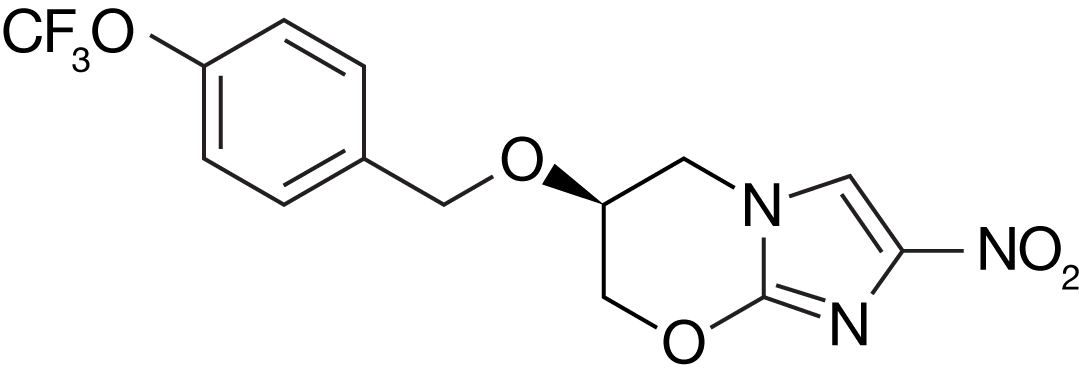Pretomanid and the BPaL Regimen
Pretomanid is a tuberculosis (TB) drug developed by TB Alliance for use in combination with bedaquiline and linezolid that is now approved by the U.S. Food and Drug Administration for treating adult patients with pulmonary tuberculosis that is resistant to isoniazid, rifamycins, a fluoroquinolone and a second line injectable antibacterial drug OR adults with pulmonary TB resistant to isoniazid and rifampin, who are treatment-intolerant or nonresponsive to standard therapy.
In July 2020, the Drug Controller General of India (DCGI) also approved pretomanid for conditional access under the National Tuberculosis Elimination Program (NTEP), making India the second country in the world to provide regulatory approval for this product.
In 2021, pretomanid received EU marketing authorisation in a combination regimen with bedaquiline and linezolid to treat highly drug-resistant TB. Additionally, in 2021 it was prequalified by the World Health Organization (WHO).
In 2022, the WHO updated its guidelines for TB treatment to allow for the programmatic implementation of treating almost all forms of drug-resistant TB with pretomanid-containing regimens.

Learn about pretomanid’s development and review the latest updates here.
About Pretomanid
Pretomanid is a new chemical entity and a member of a class of compounds known as nitroimidazooxazines. Novel compounds are important in pursuing new TB treatments because resistance to drugs and drug classes currently used to treat TB is widespread. During early development, pretomanid was referred to as PA-824. Pretomanid was developed by TB Alliance as an oral tablet formulation for the treatment of tuberculosis in combination with other anti-tuberculosis agents.
One such combination is BPaL, which consists of bedaquiline + pretomanid + linezolid. WHO TB treatment guidelines allow for the programmatic implementation of treating almost all forms of drug-resistant TB with pretomanid-containing regimens.
Learn more about pretomanid here.
About the BPaL Regimen
Pretomanid as part of the BPaL regimen is approved by the U.S. Food and Drug Administration (FDA) for the treatment of adults with pulmonary tuberculosis that is resistant to isoniazid, rifamycins, a fluoroquinolone and a second line injectable antibacterial drug OR adults with pulmonary TB resistant to isoniazid and rifampin, who are treatment-intolerant or nonresponsive to standard therapy.
BPaL was first studied in the Nix-TB trial, which enrolled people with XDR-TB as well as treatment-intolerant or non-responsive MDR-TB. Nix-TB data have demonstrated a successful outcome in 95 of the first 107 patients after six months of treatment with BPaL and six months of post-treatment follow-up. For two patients, treatment was extended to nine months. BPaL has been tested in drug-resistant TB patients co-infected with HIV, including those receiving antiretrovirals (ARVs).
The global treatment success rate has been 63% with 9+ month treatment standards. The WHO has since announced guidelines to treat DR-TB using six-month, all-oral, three or four drug regimens with reported success rates of approximately 90% in clinical trials.
Scientific Publications
A full list of peer-reviewed research studying pretomanid and pretomanid-containing regimens is available.
View the publications


